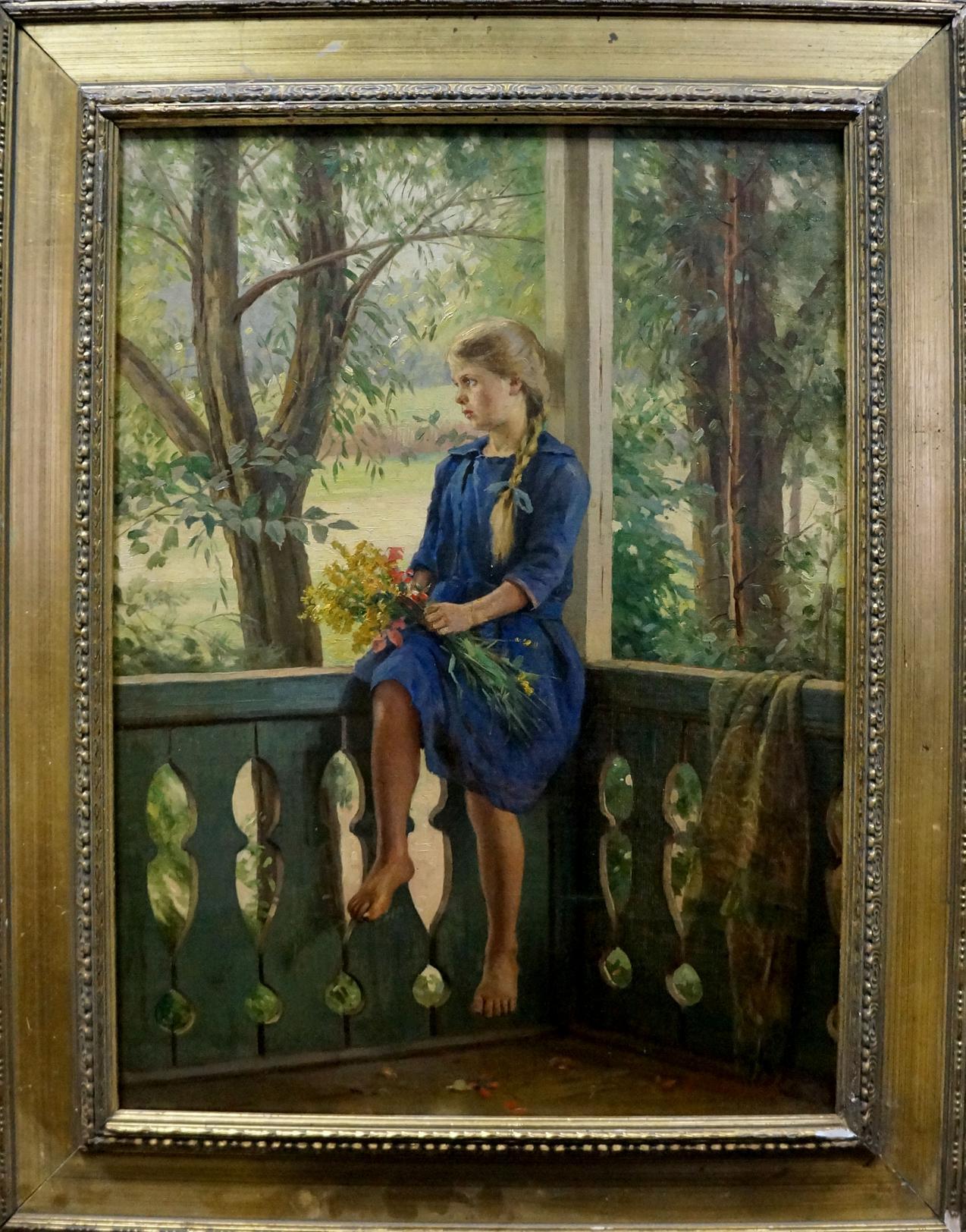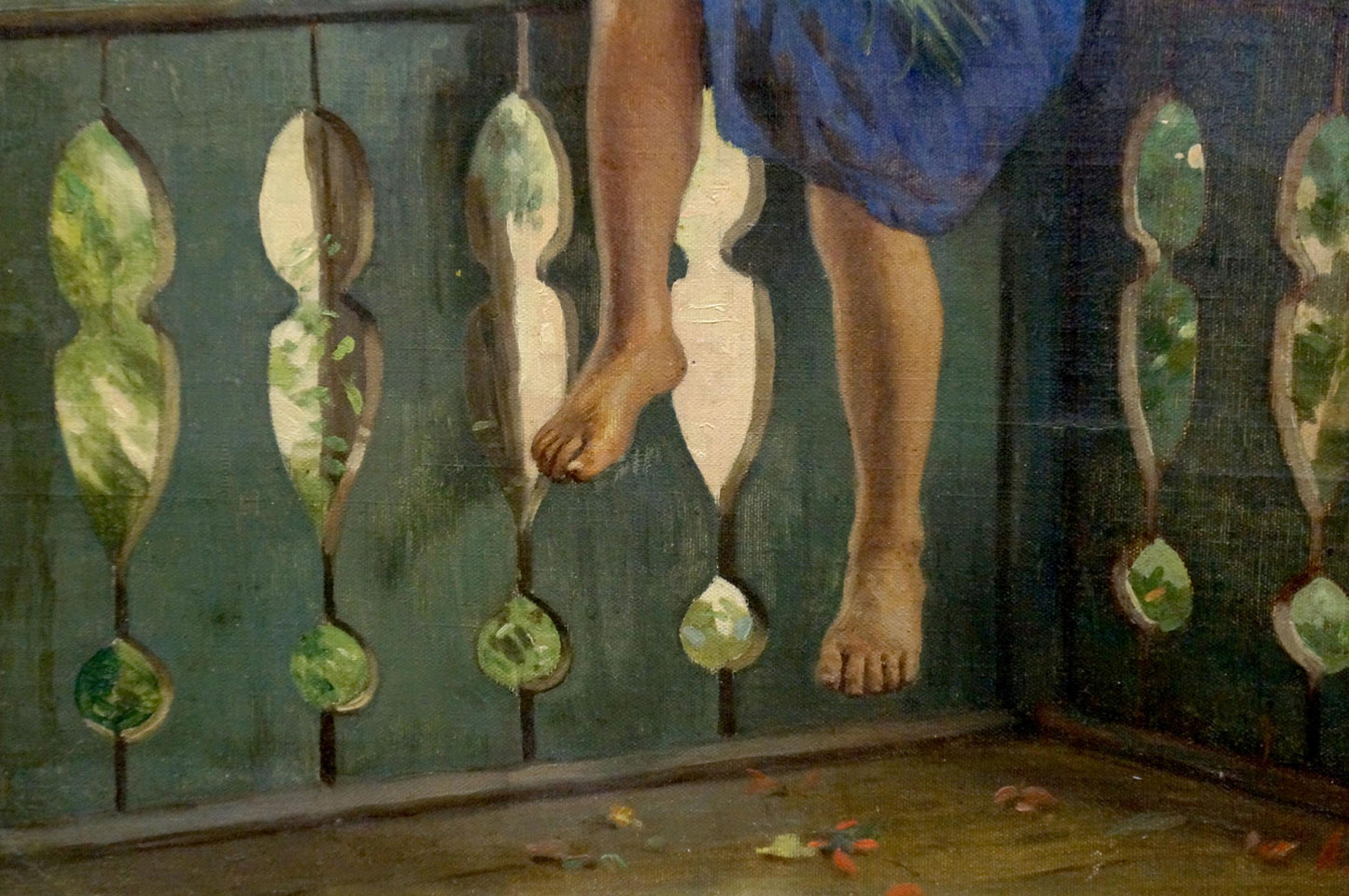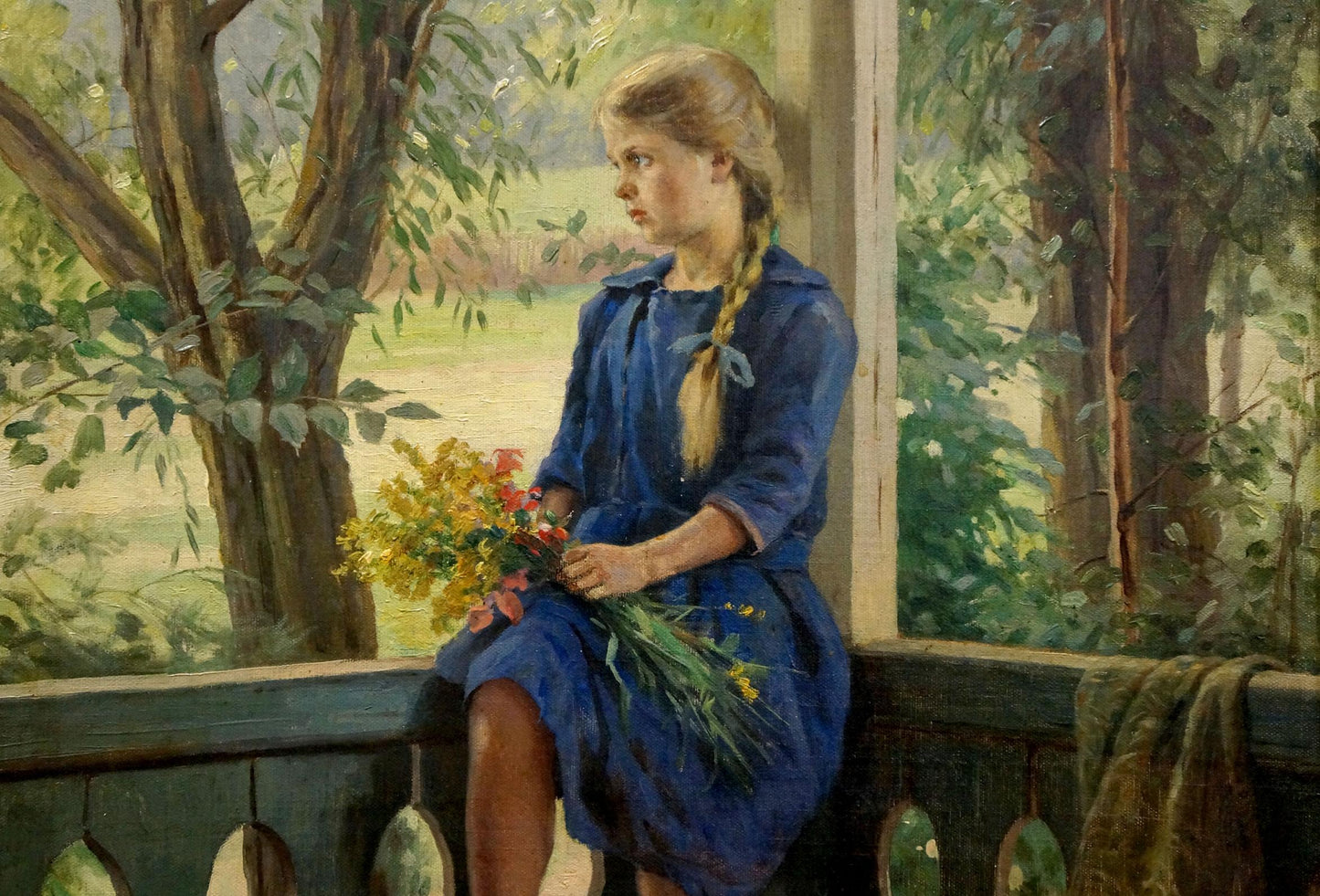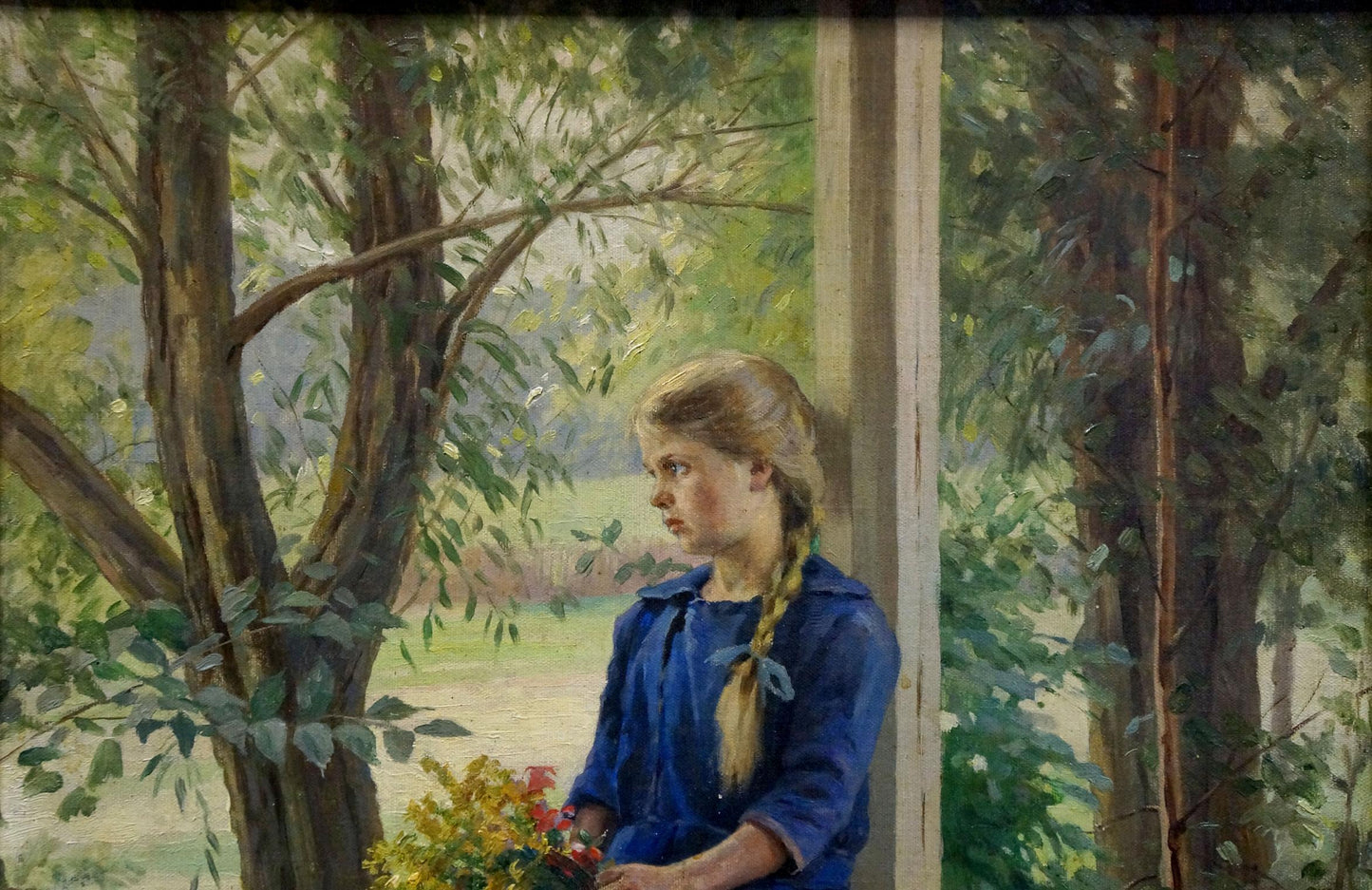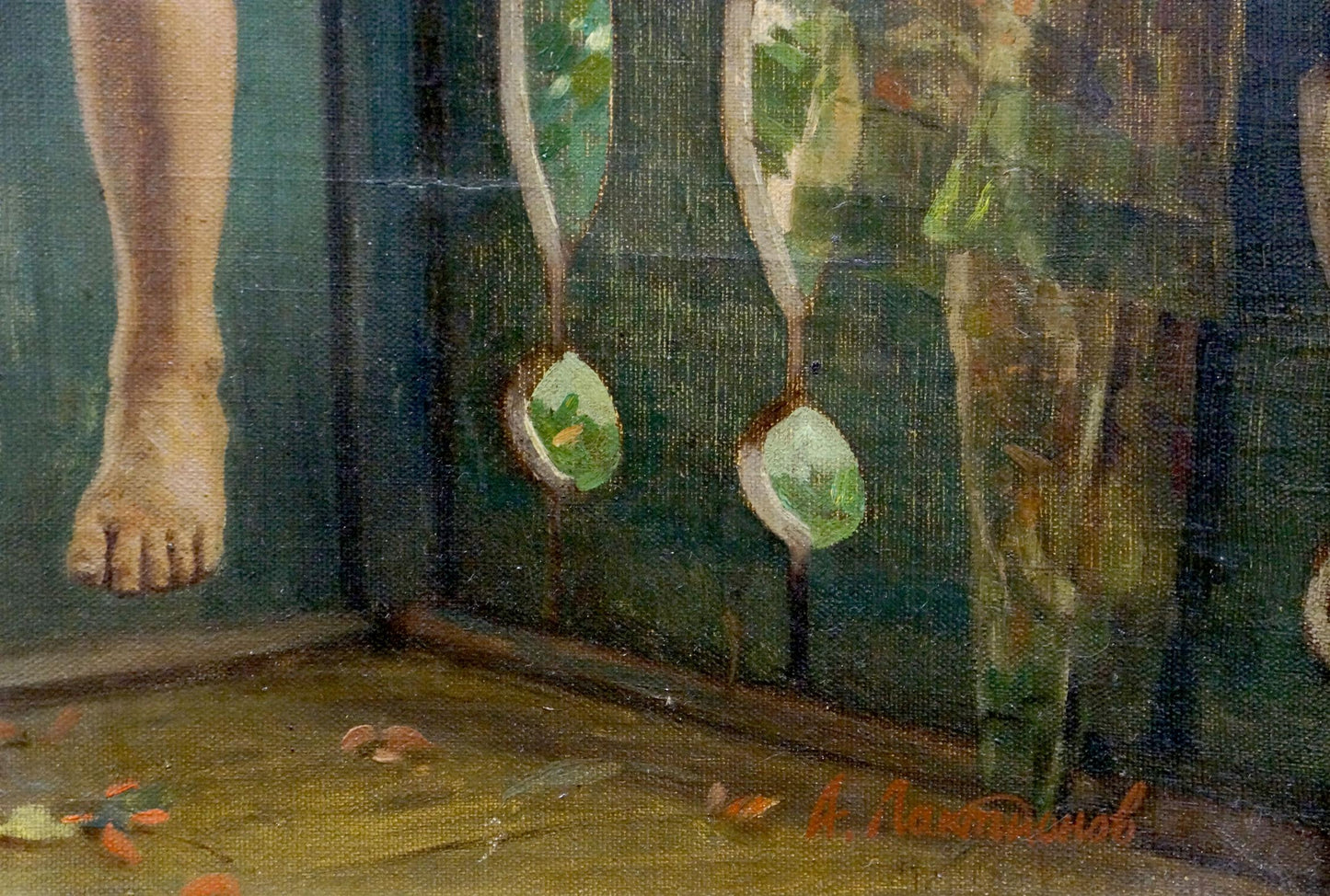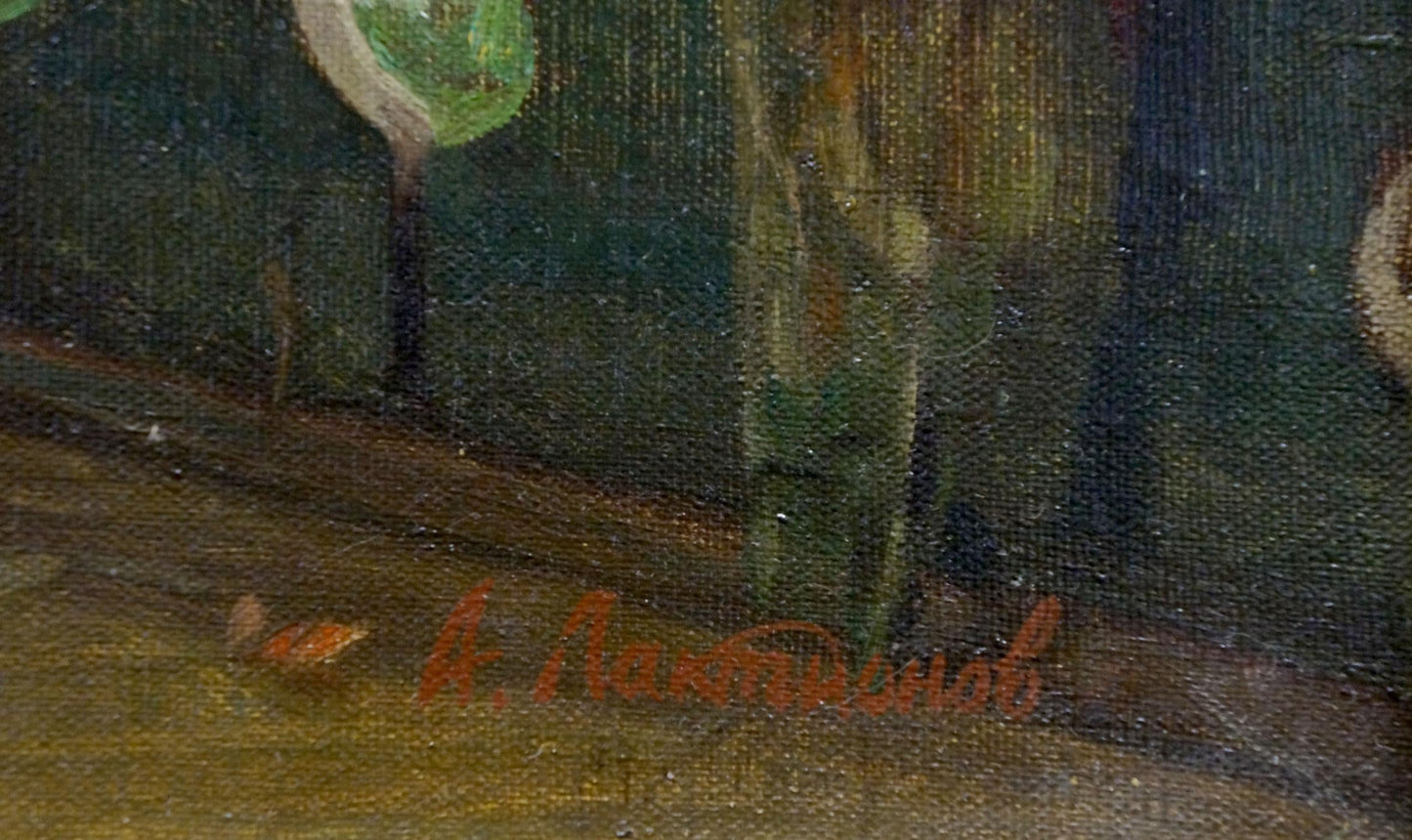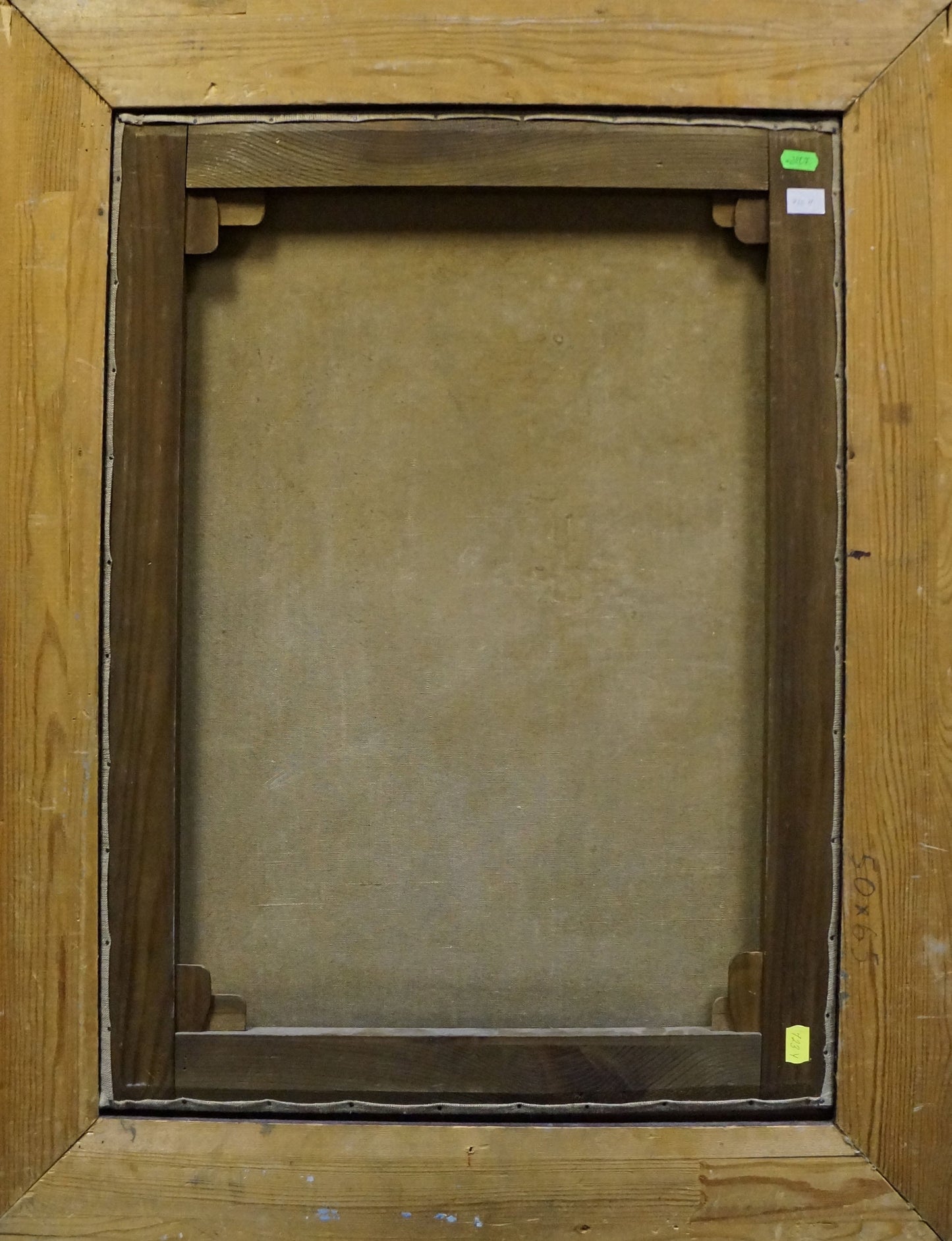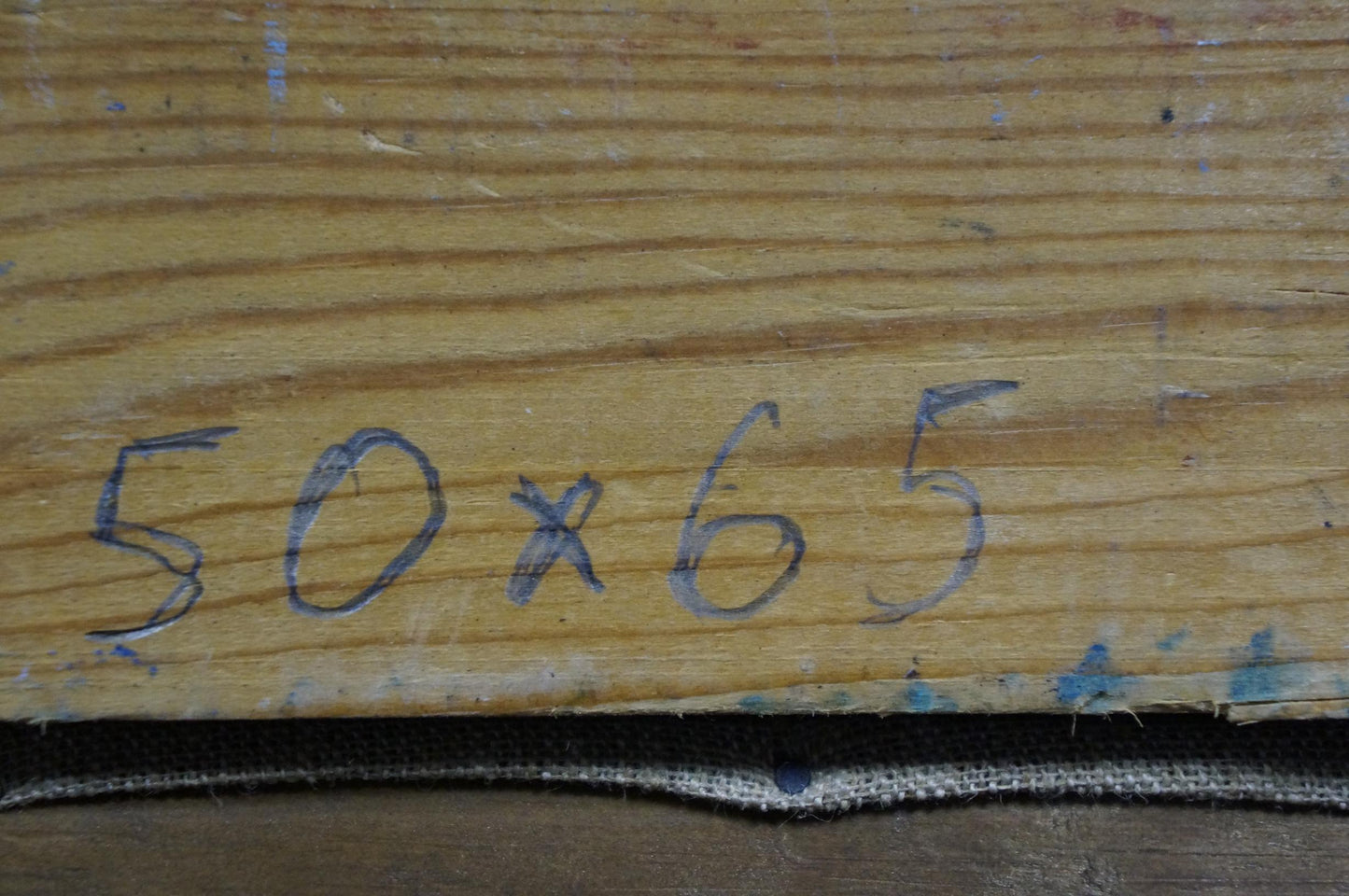1
/
of
8
Oil painting Daughter's portrait Laktionov Alexander Ivanovich
Oil painting Daughter's portrait Laktionov Alexander Ivanovich
SKU:Verns1051
Regular price
$8,500.00 USD
Regular price
Sale price
$8,500.00 USD
Taxes included.
№Verns 1051
*** ABOUT THIS PAINTING ***
* TITLE: "Daughter's portrait"
* ARTISTS: Laktionov Alexander Ivanovich
* SIZE: 50x65 cm/'19.68x25.59 inches'
* MEDIUM: oil, canvas
* HAND PAINTED: Original painting from our collection
* CONDITION: we tried to convey the maximum information with the help of photos about this product
About the artist: Famous Soviet painter, graphic artist. Laureate of the Stalin Prize of the first degree (1948). Member of the Academy of Arts of the USSR (1958). People's Artist of the RSFSR (1969). Significant master of portrait and genre painting. A convinced realist, in drawing and painting he adhered to a conservative academic manner. Alexander Ivanovich Laktionov was born in Rostov-on-Don. The father of the future artist worked as a blacksmith at a factory, he painted well. He instilled in his son a love for the fine arts. Laktionov received his primary art education in his hometown. In 1926, he entered the Rostov Art School, where he studied for three years under the guidance of the founder of the educational institution, artist-teacher A. S. Chinenov. Here the formation of the realistic direction of the future master's work began. Continues his studies at the All-Russian Academy of Arts in Leningrad (1932–38). A noticeable influence on the young artist during his studies was exerted by the director of the Academy, professor of painting I.I.Brodsky, a student of I.E.Repin, one of the main representatives of realistic traditions in Soviet fine arts. After completing the academic course, Laktionov completed his postgraduate studies at an educational institution (1938–1944), where he was headed by IE Grabar. During this period, Alexander Ivanovich devoted a lot of time to studying the work of artists of past years, studied the technique of their writing, trying to find his own painting style. The manifestation of such searches was reflected, for example, in the Self-portrait of 1945, which bears the imprint of the traditions of the old Spanish masters. A. Laktionov's work began to attract the attention of specialists and spectators at the turn of the 1930s-1940s. The artist, who began his career in art as a portraitist, at this time creates a number of memorable works, which, first of all, include the painting "Cadets Publishing a Wall Newspaper" (1938), a portrait of I. Brodsky (1939) and a series of graphic portraits of the Moscow Art Theater artists ( 1940). During the Great Patriotic War, Laktionov was evacuated to Samarkand, where the students of the Repin Institute of Fine Arts moved to. The artist drew a lot, was engaged in painting, painted the picture "Speech of Comrade Stalin on November 7, 1941" (1942). In the postwar period, most Soviet artists turned to genre painting. Such masters as F.P. Reshetnikov, S.A.Grigoriev and others are widely known in this direction. Alexander Ivanovich also tries his hand at the genre and achieves significant success. His painting "Letter from the Front" (1947) made a strong impression on the public and brought the author wide fame. A year later, the artist was awarded the State Prize of the first degree for this painting. "Letter from the Front" - one of the most famous post-war genre paintings was painted by the artist in Zagorsk (Sergiev-Posad) near Moscow, where in early 1944 Laktionov and his family came from evacuation. Alexander Ivanovich recalled: “I lived with my big family in the Trinity-Sergius Lavra. There, in the wall of the Kremlin, there was once a loophole for a cannon, and later a large cell was built. " Having concluded an agreement in the spring of 1945 for his first postgraduate painting, the artist was going to give it the name "Meeting". I considered several compositional options, but everything was decided by chance. Once, while walking, he met a soldier with a bandaged hand, leaning on a stick when walking.
*** ABOUT THIS PAINTING ***
* TITLE: "Daughter's portrait"
* ARTISTS: Laktionov Alexander Ivanovich
* SIZE: 50x65 cm/'19.68x25.59 inches'
* MEDIUM: oil, canvas
* HAND PAINTED: Original painting from our collection
* CONDITION: we tried to convey the maximum information with the help of photos about this product
About the artist: Famous Soviet painter, graphic artist. Laureate of the Stalin Prize of the first degree (1948). Member of the Academy of Arts of the USSR (1958). People's Artist of the RSFSR (1969). Significant master of portrait and genre painting. A convinced realist, in drawing and painting he adhered to a conservative academic manner. Alexander Ivanovich Laktionov was born in Rostov-on-Don. The father of the future artist worked as a blacksmith at a factory, he painted well. He instilled in his son a love for the fine arts. Laktionov received his primary art education in his hometown. In 1926, he entered the Rostov Art School, where he studied for three years under the guidance of the founder of the educational institution, artist-teacher A. S. Chinenov. Here the formation of the realistic direction of the future master's work began. Continues his studies at the All-Russian Academy of Arts in Leningrad (1932–38). A noticeable influence on the young artist during his studies was exerted by the director of the Academy, professor of painting I.I.Brodsky, a student of I.E.Repin, one of the main representatives of realistic traditions in Soviet fine arts. After completing the academic course, Laktionov completed his postgraduate studies at an educational institution (1938–1944), where he was headed by IE Grabar. During this period, Alexander Ivanovich devoted a lot of time to studying the work of artists of past years, studied the technique of their writing, trying to find his own painting style. The manifestation of such searches was reflected, for example, in the Self-portrait of 1945, which bears the imprint of the traditions of the old Spanish masters. A. Laktionov's work began to attract the attention of specialists and spectators at the turn of the 1930s-1940s. The artist, who began his career in art as a portraitist, at this time creates a number of memorable works, which, first of all, include the painting "Cadets Publishing a Wall Newspaper" (1938), a portrait of I. Brodsky (1939) and a series of graphic portraits of the Moscow Art Theater artists ( 1940). During the Great Patriotic War, Laktionov was evacuated to Samarkand, where the students of the Repin Institute of Fine Arts moved to. The artist drew a lot, was engaged in painting, painted the picture "Speech of Comrade Stalin on November 7, 1941" (1942). In the postwar period, most Soviet artists turned to genre painting. Such masters as F.P. Reshetnikov, S.A.Grigoriev and others are widely known in this direction. Alexander Ivanovich also tries his hand at the genre and achieves significant success. His painting "Letter from the Front" (1947) made a strong impression on the public and brought the author wide fame. A year later, the artist was awarded the State Prize of the first degree for this painting. "Letter from the Front" - one of the most famous post-war genre paintings was painted by the artist in Zagorsk (Sergiev-Posad) near Moscow, where in early 1944 Laktionov and his family came from evacuation. Alexander Ivanovich recalled: “I lived with my big family in the Trinity-Sergius Lavra. There, in the wall of the Kremlin, there was once a loophole for a cannon, and later a large cell was built. " Having concluded an agreement in the spring of 1945 for his first postgraduate painting, the artist was going to give it the name "Meeting". I considered several compositional options, but everything was decided by chance. Once, while walking, he met a soldier with a bandaged hand, leaning on a stick when walking.
Couldn't load pickup availability
